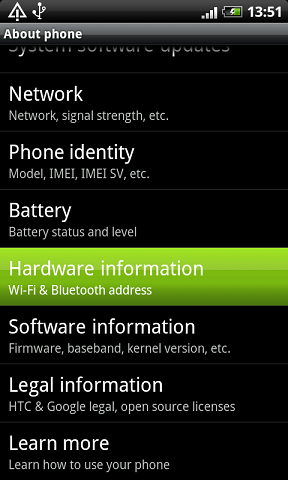
- FIND MAC ADDRESS MAC COMPUTER HOW TO
- FIND MAC ADDRESS MAC COMPUTER MAC OS
- FIND MAC ADDRESS MAC COMPUTER MAC
- FIND MAC ADDRESS MAC COMPUTER WINDOWS
If you don’t use a DNS service, the network address is derived from your computer name. Your computer’s network address is provided by the Domain Name System (DNS) server your computer uses. If you select Remote Login, the network address looks similar to or you select Remote Management, the network address looks similar to 10.212.167.33 or. If you select File Sharing, the network address looks similar to smb://10.212.167.33 or smb://. If you select Screen Sharing, the network address looks similar to vnc://10.212.167.33 or vnc://. The network address for the service is displayed on the right.
FIND MAC ADDRESS MAC COMPUTER MAC
On older macOS/OS versions the tab will be labeled Ethernet and the MAC address will be displayed next to Ethernet ID, as shown in the image below. Type ipconfig /all (note the space between the g and /). Select Run or type cmd into the search bar at the bottom of the Start menu to bring up the command prompt.
FIND MAC ADDRESS MAC COMPUTER WINDOWS
In the list on the left, select a service that is On. Click the Hardware tab to find your computers MAC Address. To find the MAC address on your Windows computer: Click on the Start menu in the bottom-left corner of your computer. On your Mac, choose Apple menu > System Preferences, then click Sharing. If you’re sharing your computer’s screen, allowing remote logins or management, or sharing files, other users may need to know your computer’s network address instead of its name to access these services.

Send files between devices with AirDrop.Make and receive phone calls on your Mac.Insert photos and documents from iPhone or iPad.If your computer has multiple network interfaces say both a wired ethernet port and a wireless network adapter each interface will have its own MAC address. Use a keyboard and mouse or trackpad across devices A Media Access Control (or MAC 1) address is a unique 48-bit number 2 assigned to every network interface.Use Continuity to work across Apple devices.Since MAC addresses are assigned directly by the hardware manufacturer, they are also referred to as hardware addresses. The physical address is used to identify a device in computer networks. Use SharePlay to watch and listen together The MAC address (short for media access control address) is the worldwide unique hardware address of a single network adapter.Use Live Text to interact with text in a photo.Make it easier to see what’s on the screen.Change the picture for you or others in apps.How do you find IP on Mac The most simple way to find your Mac’s IP Address is to do the following steps. Click Advanced in the bottom right corner.
FIND MAC ADDRESS MAC COMPUTER HOW TO

In the command prompt, type ipconfig /all and press enter. Type ifconfig into the Terminal window and press the Enter/Return key. Find MAC Address using 'ipconfig /all' Command.

If your computer has multiple network interfaces say both a wired ethernet port and a wireless network adapter each interface will have its own MAC address. The MAC address (short for media access control address) is the worldwide unique hardware address of a single network adapter. Launch Terminal from the Applications:Utilities folder. A Media Access Control (or MAC 1) address is a unique 48-bit number 2 assigned to every network interface. Choose Ethernet from the list of interfaces on the left and click the Advanced button.Ĭhoose the Hardware tab under which you will see the MAC address of your ethernet card. Press Cancel to return to the Network menu. Select System Preferences from the Apple menu at the top left of your screen.Ĭlick Network from the System Preferences menu.Ĭhoose Wi-Fi from the list of interfaces on the left and click the Advanced button.Ĭhoose the Hardware tab under which you will see the MAC address of your wireless card.
FIND MAC ADDRESS MAC COMPUTER MAC OS
These are instructions on how to find the MAC address of your ethernet or wireless networking card in Mac OS X.


 0 kommentar(er)
0 kommentar(er)
